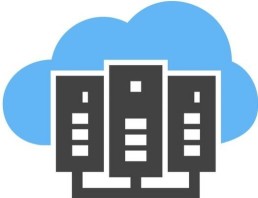Windows Server 2019 – An overview of the different versions

Since 2018, the new Microsoft server operating systems Windows Server are available. As with the predecessor Windows Server 2016, there are also different variants of Windows Server 2019 . Again, similar to Windows Server 2016 Essentials, there is the slimmed-down version of the operating system, Windows Server 2019 Essentials, and versions with a greater range of functions. Microsoft also offers a standard and a data centre variant. The versions differ in their range of functions and are thus aimed at different target groups and different purposes. How these differences look like and for whom which variant is the right one, we present in this blog article.
Only three versions of Windows Server left
Unlike the older edition, Windows Server 2012, Microsoft now only offers three versions of the Windows Server 2019 operating system. These are the Essentials, Standard and Datacenter versions. Versions such as the Windows Server 2008 R2 Enterprise variant are therefore no longer available. Those who are considering purchasing a server operating system should perhaps not get the older Windows Server 2016. This version is available today at a reasonable price, but the end of support in 2022 is already foreseeable. When purchasing a new system, it is worthwhile for security reasons to buy the latest version directly.

Windows Server 2019 Essentials
The most basic and affordable version of the operating system is the Windows Server Essentials version. While the feature set of Standard and Datacenter is very similar, Microsoft has programmed the Essentials variant with a reduced feature set and a small number of possible licensing options. This version is thus specifically tailored to small organisations and companies. Compared to Windows Server 2016 Essentials, the new version has been significantly improved, especially in the areas of „hybrid scenarios, „application innovation“, „hyper-converged infrastructure“ and „security“. Virtual networks can now be encrypted more easily with Microsoft’s Encrypted Networks and protected more reliably against forgery and eavesdropping attempts. Access to a network running Windows Server 2019 is automatically limited to 25 users and 50 devices. An organisation can only run one server with this operating system, as the Essentials Server must also be the domain controller. Therefore, this version is not interesting for institutions with more than 25 employees.
Windows Server 2019 Standard
The range of functions of the Standard version is already significantly greater than that of the Essentials version. Two virtualisation rights for two virtual machines can be used with the Standard version. The Standard version offers the possibility to buy additional rights. This means that institutions of any size can purchase the Windows Server 2019 Standard version with peace of mind if they need to use more advanced functions with their servers, but only need a small virtualisation level. The supported computing power of the Standard version is greater than that of the Essentials version. Windows Server 2019 Standard Multilingual and the Windows Server Standard Open Licence have a RAM limit of 24 TB and no CPU limit anymore. However, a minimum of 16 cores per server and 8 cores per processor are required.
Windows Server 2019 Datacenter
Windows Server 2019 Datacenter is the most comprehensive version of Windows Server 2019, and the hardware requirements are the same as the Standard licence. With the higher price for the Datacenter, in contrast to the Standard version, unlimited visualisation rights are also included, which means that this version is primarily aimed at larger companies that have particularly high demands on their IT systems and a high virtualisation requirement. In addition to the unlimited number of virtual machines and Hyper-V containers, the Datacenter offers even more features. These include, for example, „Storage Spaces Direct“, which simplifies the work with Software Defined Storages. For example, the server’s memory can be used independently of its hardware. Other features of the data centre that the standard version does not offer are Shielded Virual Machines and software defined networking.
Header image: © filins, stock.adobe.com
